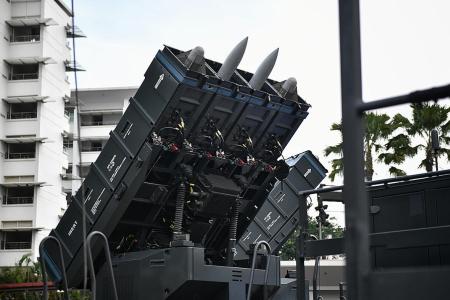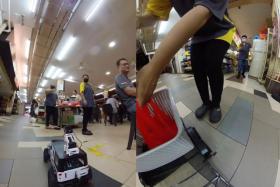Spyder air defence system hits full operational status
A ground-based air defence system that can respond faster and with greater precision to aircraft and munition threats attained full operational capability status yesterday.
The surface-to-air Python-5 and Derby Spyder of the Republic of Singapore Air Force (RSAF), introduced in 2011, has been integrated into the enhanced Island Air Defence system.
Senior Minister of State for Defence and Foreign Affairs Maliki Osman highlighted the need for a robust air defence capability at a ceremony on Wednesday at Chong Pang Camp, where Chief of Defence Force Melvyn Ong and Chief of Air Force Mervyn Tan were present.
"The very foundation of a nation's sovereignty is in its ability to protect its skies and borders," he said.
"In April this year, the RSAF proved its vigilance and responsiveness when it responded to an alleged bomb threat on a Scoot flight.
"Two F-15SG fighters were in the air escorting the aircraft within minutes of being activated. It turned out to be a false alarm but we may not be so lucky in the future."
Compared with its predecessor, Rapier, which has been in service for 30 years, the Spyder system has a longer interception range and at higher altitudes.
It can intercept aerial threats at a range of 15km and an altitude of 9km. This is more than twice the range and three times the altitude of the Rapier system.
It takes only four men and 15 minutes to deploy the Spyder, compared with the 15 men and one hour needed to deploy the Rapier.
In addition, the Spyder will be able to tap a real-time integrated air picture to respond faster and engage targets with greater precision.
Lieutenant-Colonel Daxson Yap, commanding officer of RSAF's 165 Squadron, said the Spyder system was in a different league compared to its predecessor, especially with its ability to deploy both the Python-5 and Derby missiles.
The missiles are fitted with infrared imaging and radio frequency seekers respectively.
"The fact that we are able to operate both of them concurrently gives us that robustness against a wide range of threats," he said.
Get The New Paper on your phone with the free TNP app. Download from the Apple App Store or Google Play Store now



